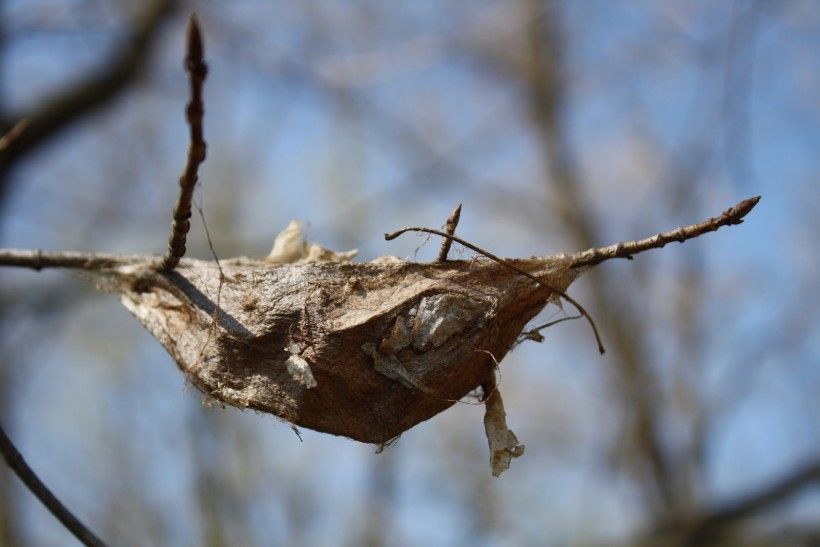Awaiting Emergence
Our staff horticulturalist, Mark Gormel, tipped us off to the location of this interesting find on the grounds on the Conservancy's offices here in Chadds Ford:

Walking past the sugar maple which holds it, you might not even notice this hide-out at the end of a twig. In the winter when the tree was without leaves, it appeared to be nothing more than an old leaf or some sort of debris. Upon closer inspection, it became clear that this little brown blob is something much more interesting-- the cocoon of the cecropia moth.
The cecropia is our largest native moth. It lays its eggs in maple trees (or sometimes black cherry or birch) and its larvae (the caterpillar) eat the leaves of its host plant. After growing and molting several times, the caterpillars spin cocoons of brown silk, like the one in the photo above, where they spend the winter. While in the cocoon, the larvae are vulnerable to predators like some wasps and flies, or even squirrels, who occasionally make a snack of them. Pruning tree branches and leaving on outside lights at night can also be detrimental to the larvae. If all goes well, in spring, the adult moth emerges from the cocoon. Because the adult moths do not have mouth parts they are unable to eat and live only 7 to 10 days.
We are hoping that the larvae in the cocoon outside our office survived the winter and will be emerging soon, and that we can capture its emergence with photos to share in a future post.